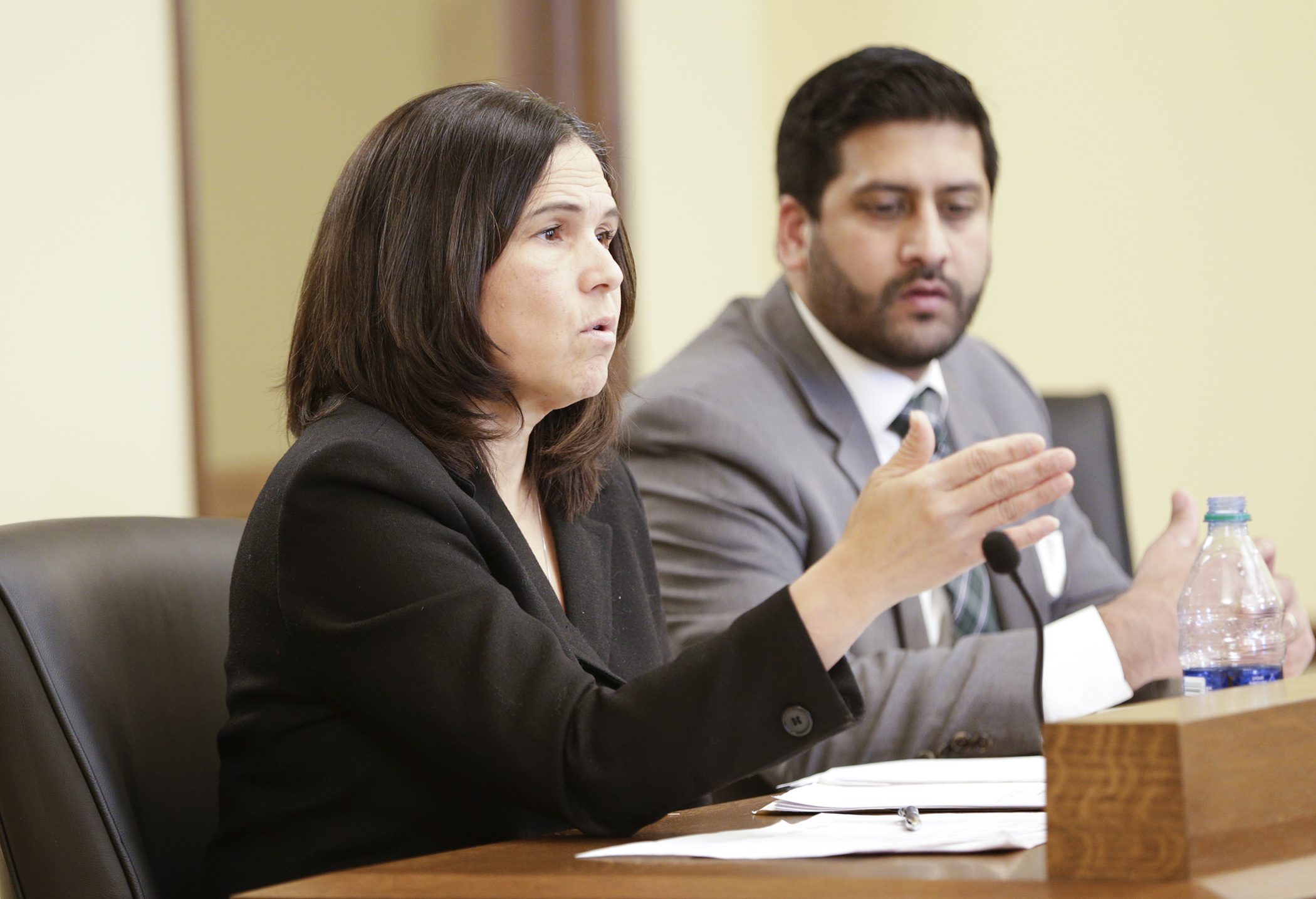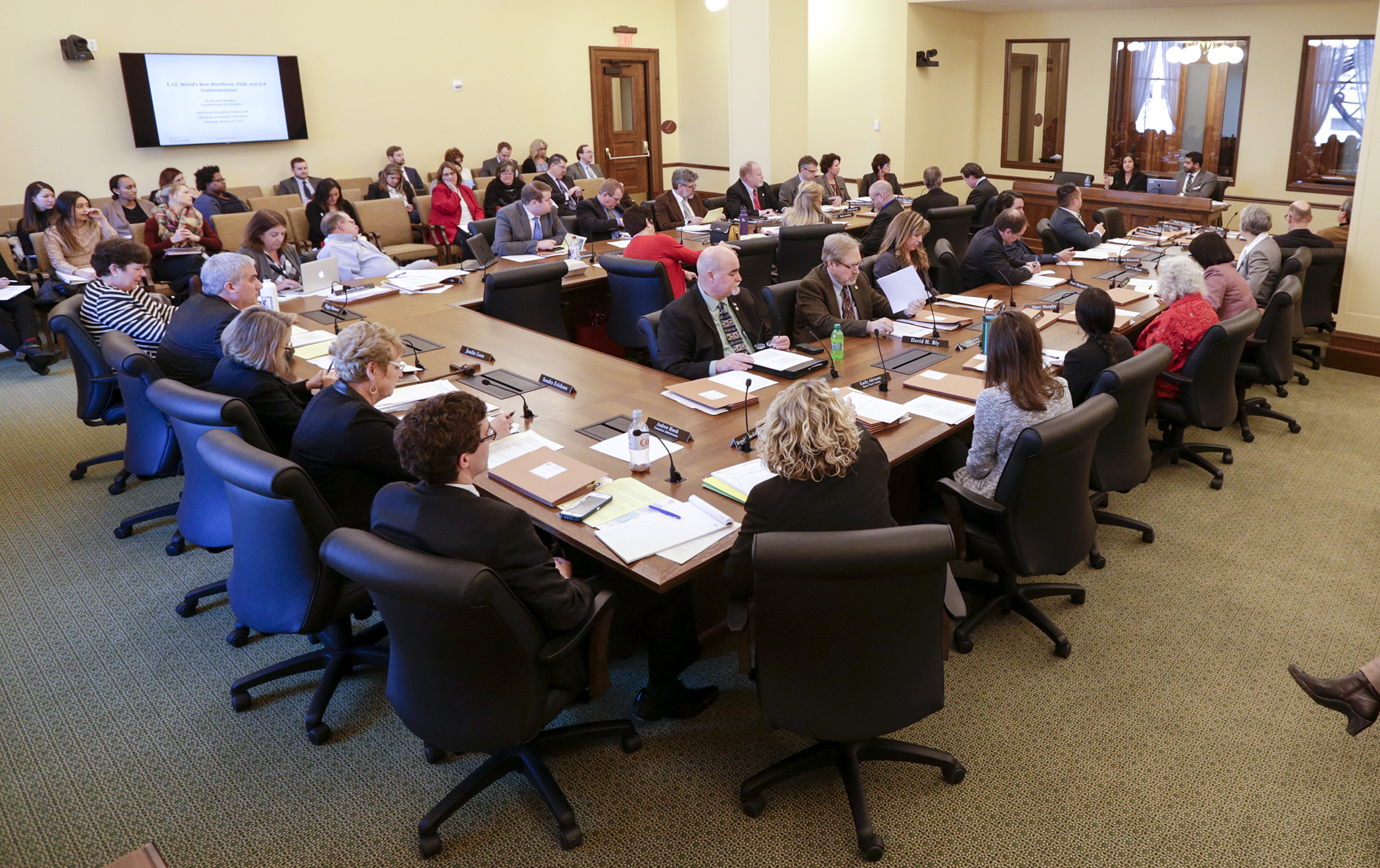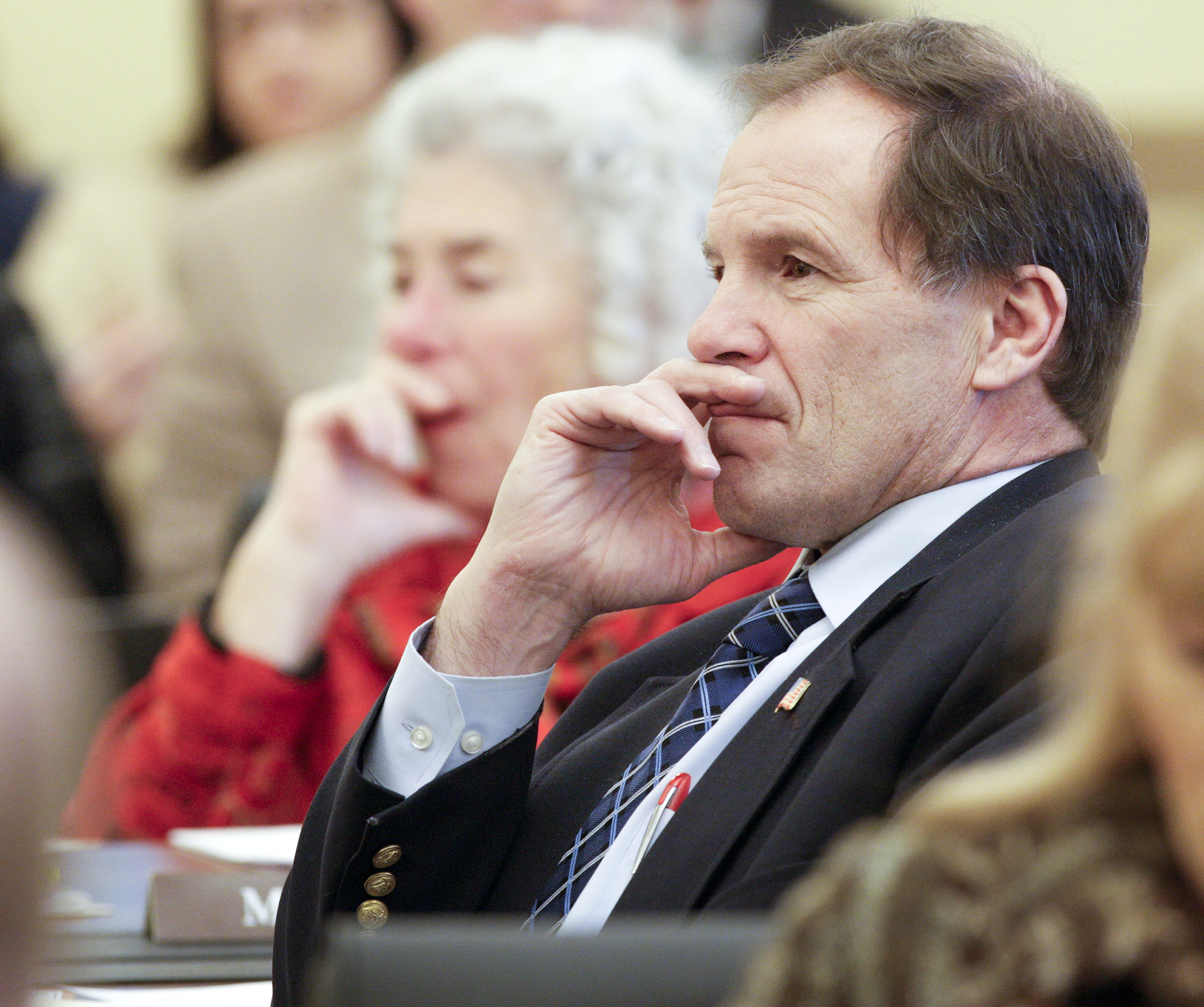Joint education committee reviews statewide education goals

A meeting of many minds gathered Thursday to discuss the implementation and progress of statewide education programs and student achievement goals.
“Over the past years we have been able to do some pretty great work, even in trying times,” said Education Commissioner Brenda Cassellius, who led the overview to both the House Education Finance and Education Innovation Policy committees. “All schools matter here in Minnesota.”
Although the answers to problems within education aren’t often black and white, legislators sought to further understand the purpose of different programs, and how they might help.
“It’s sometimes hard to see which program is working, and which is not,” said Rep. Ron Kresha (R-Little Falls).
Every student, succeeding always
The Every Student Succeeds Act (ESSA) essentially replaced the No Child Left Behind (NCLB) Act, enacted by President George W. Bush in 2002. Signed into law on Dec. 10, 2015 by President Obama, ESSA also adapted the overarching Elementary and Secondary Education Act (ESEA) created in 1965 (and reauthorized every five years).
The ESSA takes the working parts of the NCLB, and adjusts them to work better. Rather than basing student performance on rigid one-size-fits-all federal standardized testing, the ESSA grants states flexibility regarding specific testing requirements if they can provide comprehensive state-developed plans designed to close the achievement gap among students, increase quality in student access, improve the quality of teacher instruction, and increase the overall outcome of all students.
 A joint meeting of the House Education Finance and Education Innovation Policy committees listens to Education Commissioner Brenda Casselius give an overview on a variety of education issues at a Jan. 12 hearing. Photo by Paul Battaglia
A joint meeting of the House Education Finance and Education Innovation Policy committees listens to Education Commissioner Brenda Casselius give an overview on a variety of education issues at a Jan. 12 hearing. Photo by Paul BattagliaDistricts now create their own strategic, measurable, ambitious, rigorous and time-sensitive (or SMART) goals, and track those goals at the local level. An estimated $230 million in federal funding is provided to help implement the objectives.
“We were able to see some pretty incredible results regarding teacher support and student progress,” Cassellius said. “… But in some districts teachers are just now getting new curriculum to be able to implement this work.”
In 2011 Gov. Mark Dayton introduced similar goals, dubbed the “Governor’s Seven Point Plan,” which included priorities to fund education for the future, better early childhood education, close the achievement gap, have students reading to par by third grade, support teaching, better testing methods and provide leadership and support. At that point Minnesota was facing a $5 billion deficit in general education funding.
WATCH Full video of Thursday's joint hearing
Since then the general education formula has risen from 1 percent to 2 percent, all kindergarten and voluntary pre-kindergarten have become fiscal priorities in the Legislature, and early childhood education scholarship funding has risen from $4 million to $48 million.
“We really have taken a mixed-delivery approach in the different opportunities and choices parents have to support their children,” Cassellius said.
The NCLB allowed a flexibility waiver that remained in effect until Aug. 1, 2016, for schools to adapt to the changes. The 2016-17 school year is a transition one, and states are still awaiting instruction from the U.S. Department of Education as to what the 2017-18 school year requirements will be under a new president.
Minnesota currently plans to submit its state plan to the Department of Education in September 2017.
World’s best workers?
 Rep. Paul Marquart and Rep. Mary Murphy listen to Education Commissioner Brenda Cassellius provide an overview on a variety of education issues at a Jan. 12 joint meeting of the House Education Finance and Education Innovation Policy committees. Photo by Paul Battaglia
Rep. Paul Marquart and Rep. Mary Murphy listen to Education Commissioner Brenda Cassellius provide an overview on a variety of education issues at a Jan. 12 joint meeting of the House Education Finance and Education Innovation Policy committees. Photo by Paul BattagliaThe World’s Best Workforce bill was passed by the Legislature in 2013. Its goal is exactly as it sounds: to make sure that high school students across the state are college and career ready once they graduate.
The plan came as a result of statewide realizations that the overall population is aging, and 70 percent of jobs will require at least a high school diploma by 2018. In addition, the state is also facing a lack of qualified teachers coming into the profession, as well as one of the largest racial achievement gaps in the nation.
“We know that there are in-school factors and out-of-school factors that affect students’ success,” said Cassellius.
The law requires each school district to develop a plan that addresses five common goals: all children are ready for school, all third-graders can read at their grade level, all racial and economic achievement gaps between students closed, all students are ready for a career or college, and all students graduate from high school. Progress is measured in part by MCA scores and high school graduation rates.
“This was a way to get everyone together around a common vison and goals that we want to see happen,” said Cassellius. “We wanted districts to be strategic and also transparent.”
“The governor and you have been a steady hand in making education move forward, not just in spending, but in accountability on how that money is being spent,” said Rep. Paul Marquart (DFL- Dilworth).
Many legislators requested that further statistical data regarding program outcomes be presented in the future as it becomes available.
“It will take some time to see these things come to fruition,” said Cassellius.
Currently, 30 districts have not yet submitted their World’s Best Workforce plans to the Department of Education.
Related Articles
Search Session Daily
Advanced Search OptionsPriority Dailies
Ways and Means Committee OKs proposed $512 million supplemental budget on party-line vote
By Mike Cook Meeting more needs or fiscal irresponsibility is one way to sum up the differences among the two parties on a supplemental spending package a year after a $72 billion state budg...
Meeting more needs or fiscal irresponsibility is one way to sum up the differences among the two parties on a supplemental spending package a year after a $72 billion state budg...
Minnesota’s projected budget surplus balloons to $3.7 billion, but fiscal pressure still looms
By Rob Hubbard Just as Minnesota has experienced a warmer winter than usual, so has the state’s budget outlook warmed over the past few months.
On Thursday, Minnesota Management and Budget...
Just as Minnesota has experienced a warmer winter than usual, so has the state’s budget outlook warmed over the past few months.
On Thursday, Minnesota Management and Budget...